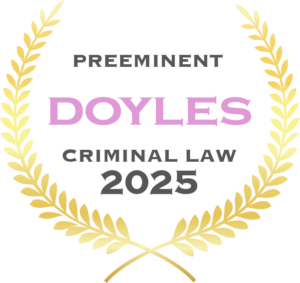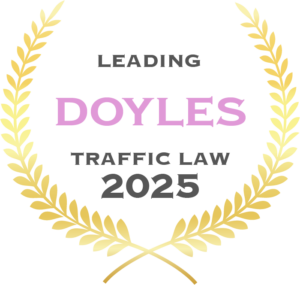NSW Police have indicated that they are continuing to investigate the accident.
In another incident, a 62-year-old woman and a 69-year-old man were taken to hospital yesterday (May 5) after being struck by a vehicle.
The driver was taken to Fairfield Police Station where he was charged with a number of offences, including negligent driving occasioning grievous bodily harm.
While the exact circumstances of the crash are not yet known, the incident serves as a reminder that a number of serious traffic offences exist in NSW.
Negligent driving
The offence of negligent driving generally encompasses situations where an accident has occurred, however, the conduct of the driving that was involved in the accident does not meet the threshold of other serious offences such as dangerous or reckless driving.
The most common examples of situations which may be classified as negligent are where a moment of inattention causes an accident, or where a driver has failed to comply with the road rules and an accident ensues.
Negligent driving is an offence under section 117 of the Road Rules 2014.
For the purpose of this section, negligence occurs when someone drives ‘without the due care and attention reasonably expected of the ordinary prudent driver’.
In determining whether the reasonable standard has been deviated from, the court may have regard to:
- The nature, condition and use of the road on which the offence is alleged to have been committed
- The amount of traffic on the road (either at the time of the offence, or the amount of traffic which might reasonably be expected to have been on the road at the time of the offence)
- Any obstructions or hazards on the road
The maximum penalty for negligent driving is a fine of $1,100 and will usually be accompanied by a licence suspension. However, the maximum penalty increases if the incident results in grievous bodily harm or death.
Negligent driving occasioning grievous bodily harm
The penalty for negligent driving is more severe if a person suffers grievous bodily harm as a result of the accident.
Grievous bodily harm is defined as an injury that is ‘really serious’. It may involve an injury that is permanent or one which seriously disfigures a person. However, the injury is not required to be long-lasting or life-threatening.
The maximum penalty for negligent driving occasioning grievous bodily harms depends on whether it is a person’s first offence.
If it is a person’s first offence, the maximum penalty is $2,200 and/or 9 months imprisonment.
If it is a person’s second (or subsequent) offence, the maximum penalty is a $3,300 fine and/or 12 months imprisonment.
Negligent driving occasioning death
Negligent driving occasioning death is the most severe form of negligent driving.
Again, the maximum penalty for this offence depends on whether it is a person’s first offence.
If it is a person’s first offence, the maximum penalty is a $3,300 fine and/or 18 months imprisonment.
If it is a person’s second or subsequent offence, the maximum penalty is a $5,500 fine and/or 2 years imprisonment.
What does the prosecution need to prove?
If a person has been charged with negligent driving, the prosecution must prove beyond reasonable doubt that:
- The person was driving a motor vehicle on a road; and
- The person was not exercising the ‘degree of care and skill that a reasonable and prudent driver would exercise in the circumstances
If a more serious form of negligent driving has been alleged, the prosecution will also need to prove that grievous bodily harm or death has resulted.
The Act defines a road as ‘an area that is open to or used by the public and is developed for, or has one of its main uses, the driving or riding or motor vehicles’.
Key Takeaways
- Negligent driving in NSW is defined by driving without the due care expected of a prudent driver, leading to accidents
- It carries a maximum fine of $1,100, increasing if the incident results in grievous bodily harm or death.
- Grievous bodily harm cases have higher penalties, with up to 9 months imprisonment for first offenses.
- Negligent driving occasioning death can result in up to 18 months imprisonment for first offenses.
- Defenses include duress, necessity, and reasonable mistake of fact.
Defences
Even if the prosecution is able to prove the above elements, a person may be able to avoid conviction if they are able to argue one of the following defences:
Duress – where a person has been unlawfully coerced into participating in an activity that they would not otherwise have participated in.
Necessity – where a person honestly and reasonably believes they are in a situation of ‘immediate peril’ and they are acting to avoid ‘irreversible evil’ to themselves or to another; for example, while driving someone to a hospital where they are suffering from really serious injuries.
Reasonable mistake of fact – this defence applies to situations where a person has made an honest and reasonable mistake as to a fact and, had the mistaken fact been true, would have rendered their actions lawful.
Written By

James Janke
James Janke is founding partner at Hamilton Janke Lawyers, and has more then decade of experience as a Criminal Defence Lawyer. Admitted to both the Supreme Court of New South Wales and High Court of Australia




